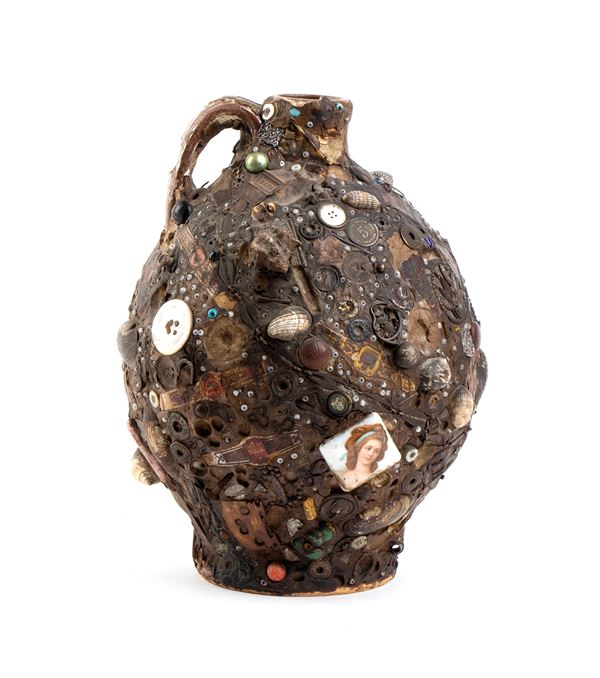205
French "picassiette" vase, mid 20th century
Height x diameter: 28 x 20 cm. Weight: 2980 g.
The picassiette technique is a form of art that consists in creating mosaics using broken pieces of plates, ceramics, glass, or porcelain. The term picassiette comes from the French words "piquer" (to take or steal) and "assiette" (plate). In an artistic sense, it refers to the creative reuse of shards and fragments to make decorative works. The vase in question belongs to the realm of naïve and outsider art, and to the expression of popular art in France.
The most emblematic period of its diffusion was between the 1930s and 1960s, mainly thanks to the figure of Raymond Isidore (1900–1964), whose work gave the technique its name. Isidore began decorating his house in Chartres (the famous Maison Picassiette) around 1938 and continued until his death. He used shards found in dumps to cover every surface of his home: walls, furniture, floors, and objects.
Later, the technique was adopted by other outsider artists and craftsmen, but it has always remained associated with a spontaneous, non-academic aesthetic, and often with creative recycling.
€ 250,00 / 350,00
Estimate
€ 180,00
Starting price
Unsold
Live auction 342
CURIOSITIES FROM EUROPEAN AND ORIENTAL ART SILVERS, IVORIES, CORALS, ICONS AND WUNDERKAMMER
Palazzo Caetani Lovatelli, wed 11 June 2025
SINGLE SESSION 11/06/2025 Hours 15:00
New lots currently at auction






